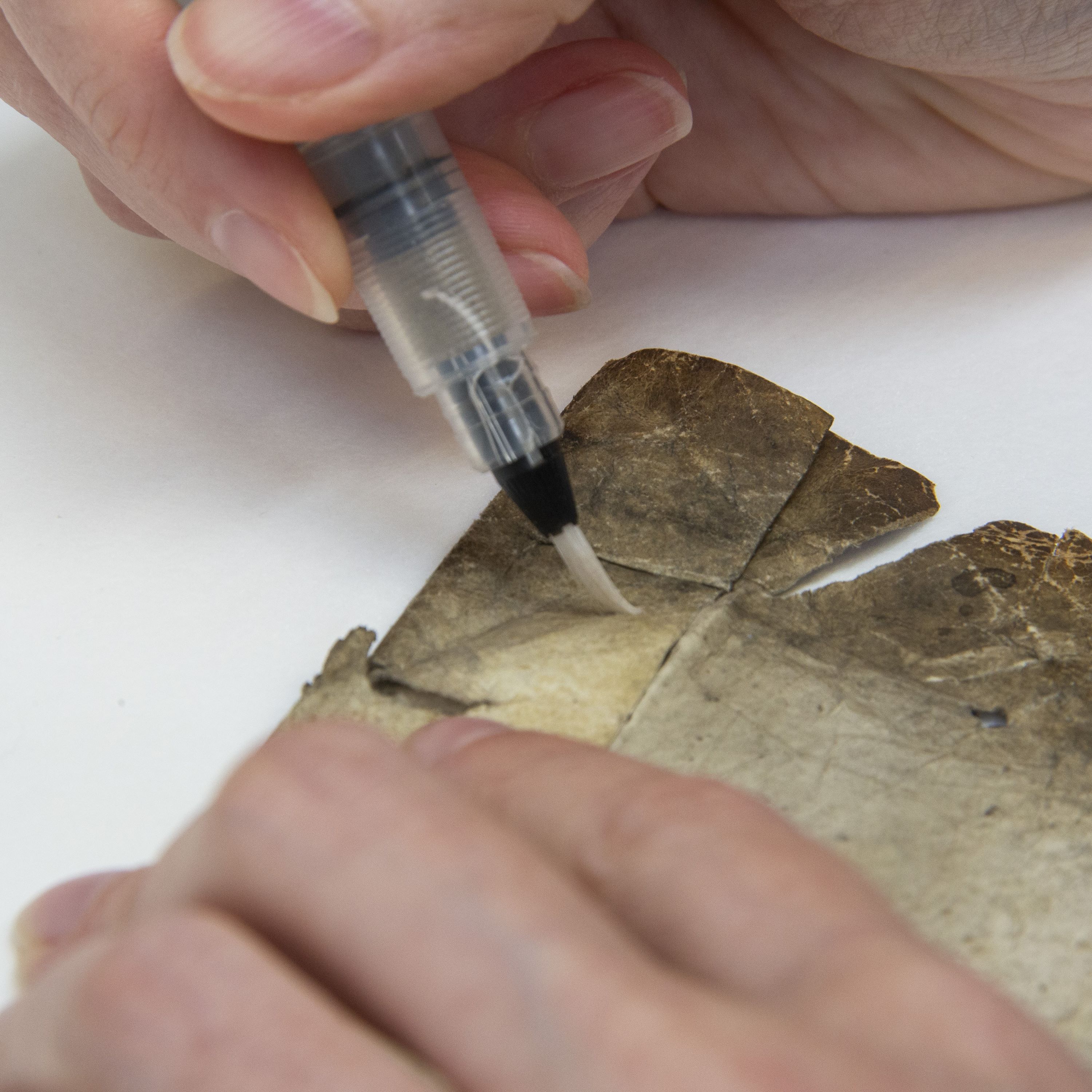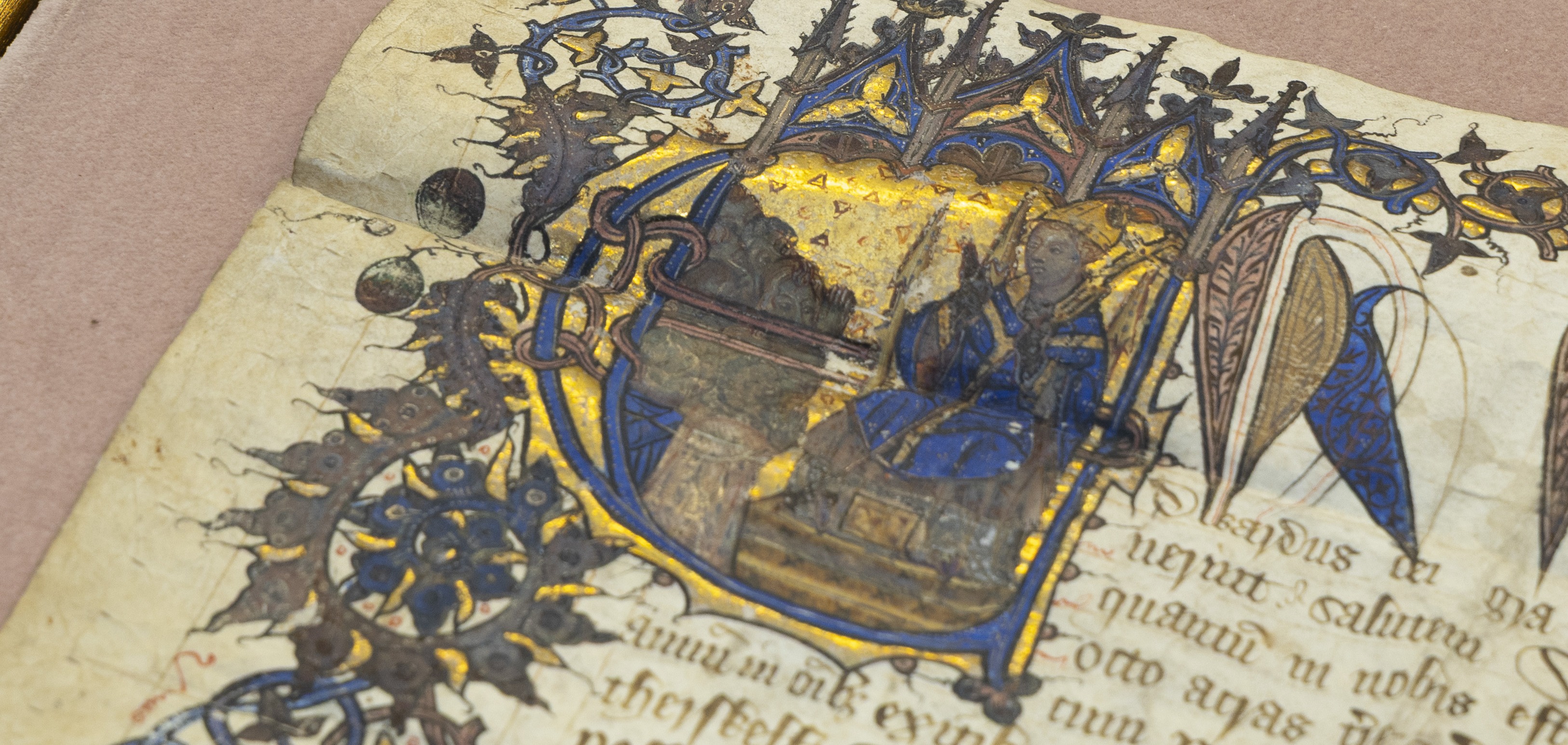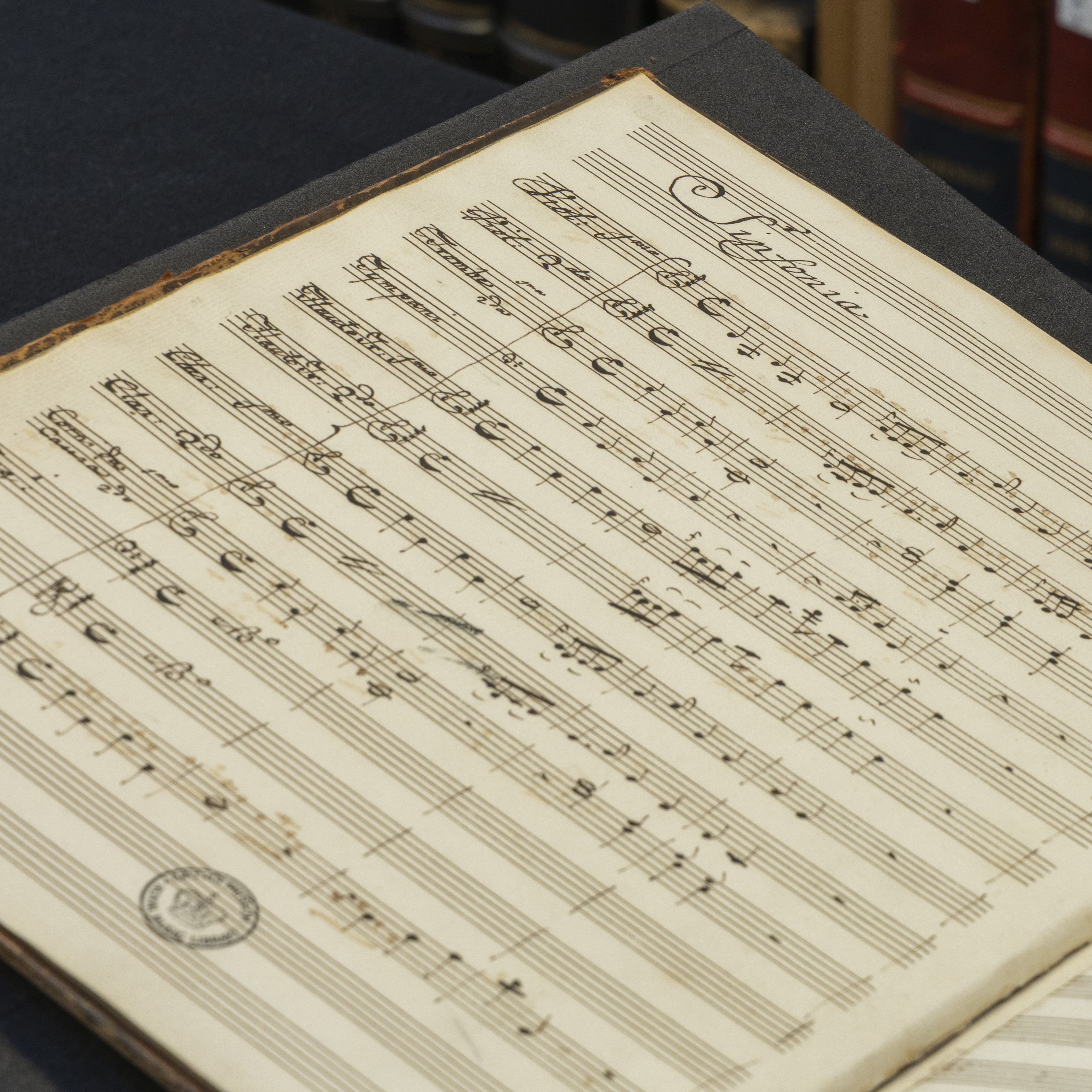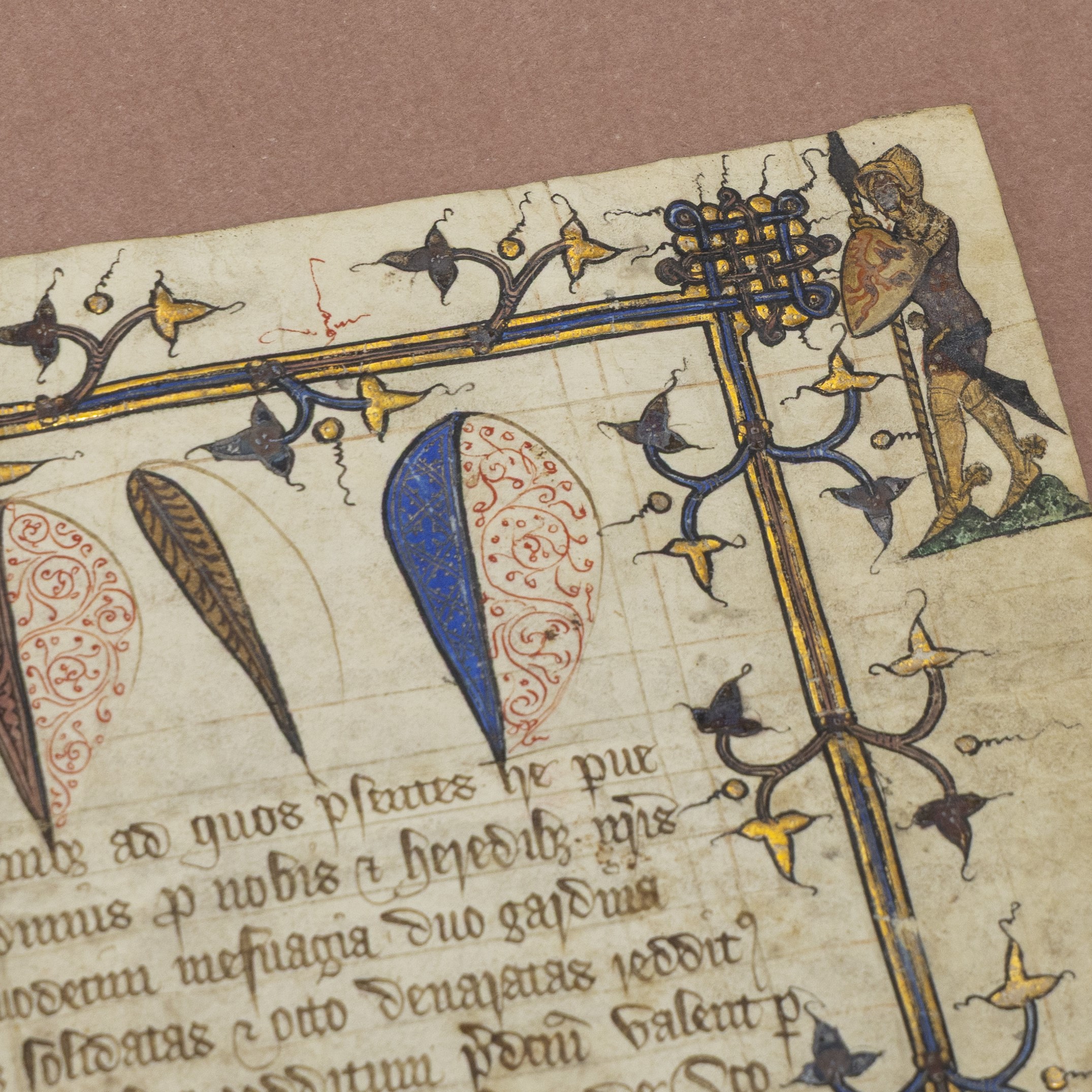Your impact
How will my gift help?
All donations will directly support our conservation work, helping us preserve our collection for generations to come.
 Saving the most fragile and rare items in our collection
Saving the most fragile and rare items in our collection
There’s no telling what one hour of conservation will do. From bookbinding and gold tooling to mould removal and replacement spines, our conservators have a wealth of knowledge that they can apply to most items in our collection.
£25 could fund one hour of conservation work by our expert teams.
Researching music history
Our collection holds items from nearly every period of written history, which are available to the thousands of visitors, students and researchers we welcome each year. This music score from the Royal Music Library, belonging to Queen Charlotte, could spark the creativity of future musicians and scholars.
£50 could help us to rebind music scores from the Royal Music Library, including a score belonging to Queen Charlotte.
Helping us inspire the next generation
Any one of the millions of items in our care could inspire the next bestselling novel, a scientific breakthrough or historic development. Conservation ensures that fragile items can be handled by researchers who could change the world.
£100 could support the care of a beautifully illuminated 14th century charter issued by Edward III, previously unknown to researchers.
Protecting ancient history
In 79 CE the volcano Vesuvius erupted, burying the towns of Herculaneum and Pompeii with hot mud and ash. Miraculously, many of the buildings, mosaics and artefacts survived, preserved underground for millennia. These scrolls are some of those surviving artefacts, and need to be rehoused to ensure they can survive for many more millennia.
£1,000 could help us rehouse 2,000-year-old carbonised scrolls from Herculaneum, protecting them for the next generation of historians.


